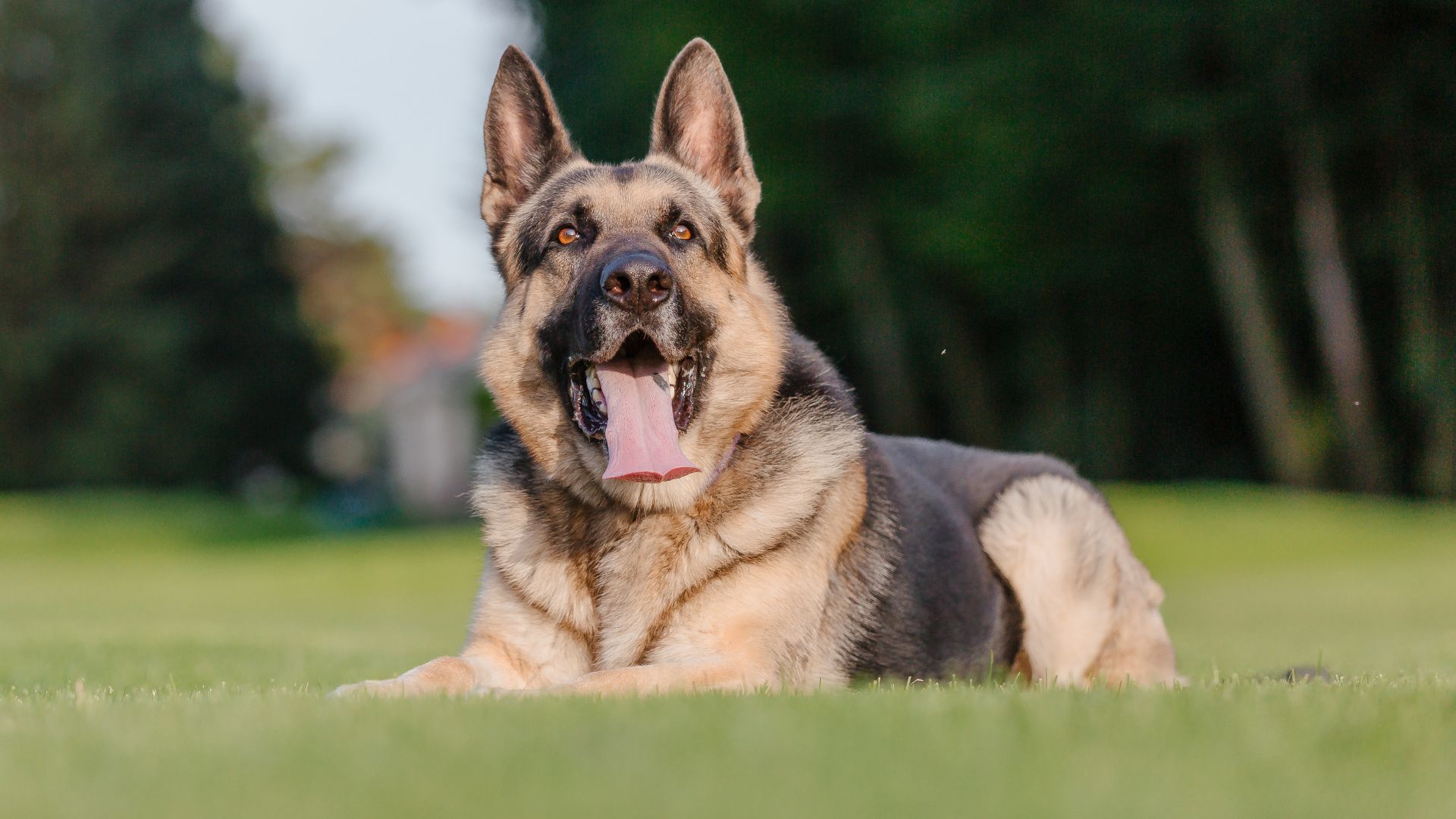Not all dogs are glued to their humans 24/7, and that’s perfectly okay. While many pups thrive on constant attention and affection, others are more self-assured and selective with their interactions. These independent-minded dogs value personal space, and though they may not always seek out cuddles, their loyalty runs deep in quieter, more observant ways.
Combine that independence with a natural instinct to protect, and you get the perfect blend of strength and self-control, traits that define the best independent guard dog breeds. These dogs are confident, watchful, and courageous, often preferring to keep a close eye on their surroundings from a distance. Their protective nature doesn’t rely on affection alone, it’s rooted in a deep understanding of boundaries and responsibility.
Of course, independence doesn’t mean detachment. These breeds are still loyal companions, just in a more measured, dignified way. With proper training and socialization, they become reliable guardians, able to sense when to step in and when to give space. Ready to meet the breeds that do it all with quiet confidence? Let’s begin.
Independent Guard Dog Breeds
1. Akita
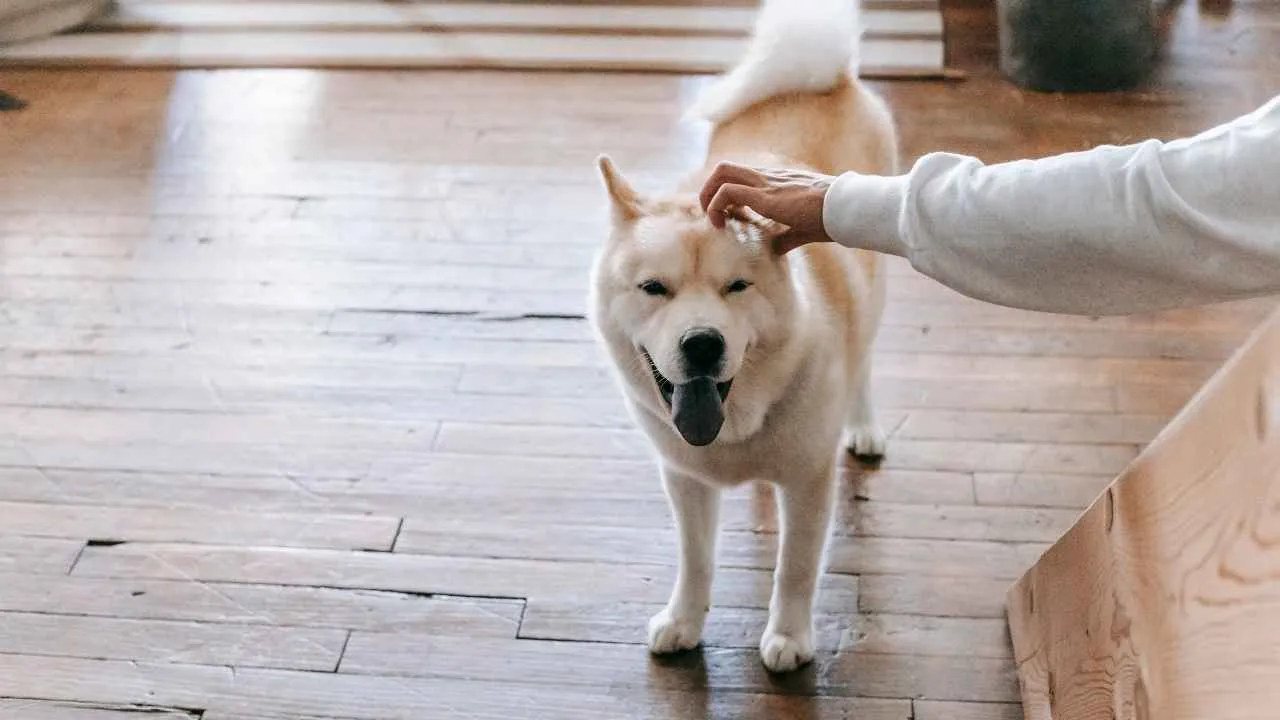
Confident and muscular, the Akita carries a legacy of strength and solitude. Bred originally in northern Japan, this powerful breed developed as both a hunter and guardian, embodying resilience in rugged climates. Despite their imposing build, often exceeding 100 pounds in males, Akitas were also intended as loyal house companions, showcasing their adaptability to indoor living with the right training and care.
According to the AKC, Akitas are profoundly loyal and dignified dogs. This breed typically forms deep bonds with family members while remaining wary or standoffish with outsiders. That cautious demeanor is what makes them such reliable watchdogs, always alert, but never overly reactive without cause.
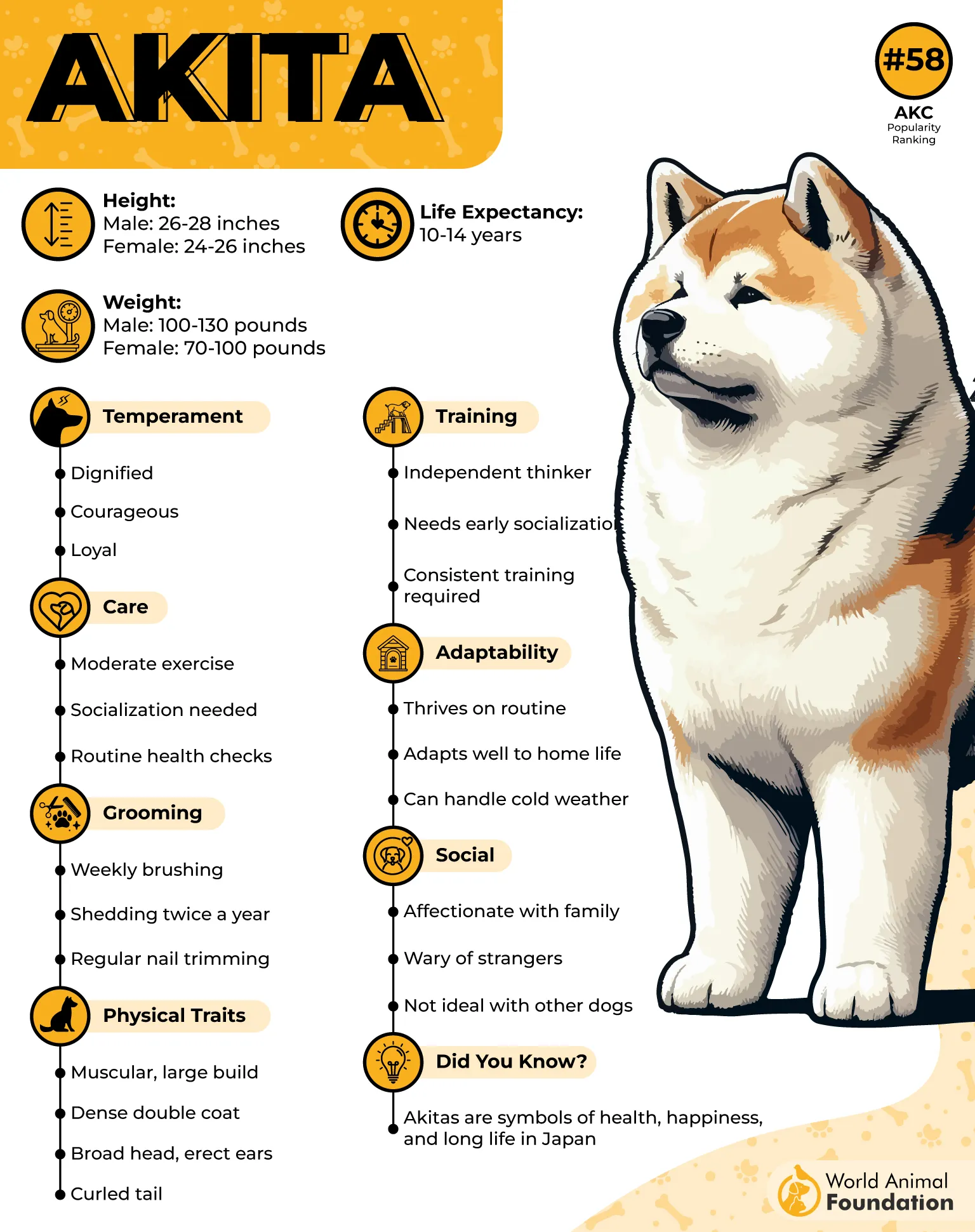
Akitas aren’t overly energetic but do require daily physical and mental stimulation. A brisk walk, purposeful play, or structured obedience work helps channel their drive productively. While they thrive in calm environments, they can also manage in smaller homes, provided they get enough daily exercise.
A defining trait of the Akita is its independence. Unlike more eager-to-please breeds, the Akita requires firm, consistent guidance starting from puppyhood. Their intelligence is clear, but they don’t obey blindly; they prefer to think things through.
The Akita’s strong prey drive and dominant tendencies, especially toward dogs of the same sex. This makes early and frequent socialization not just beneficial, but essential. Their reserved nature demands proactive training to ensure they remain calm and controlled in unpredictable social scenarios.
They have a strong guarding instinct. Their loyalty is unwavering, but their autonomy is just as deeply rooted, a balance that requires respectful, experienced handling.
2. Maremma Sheepdog
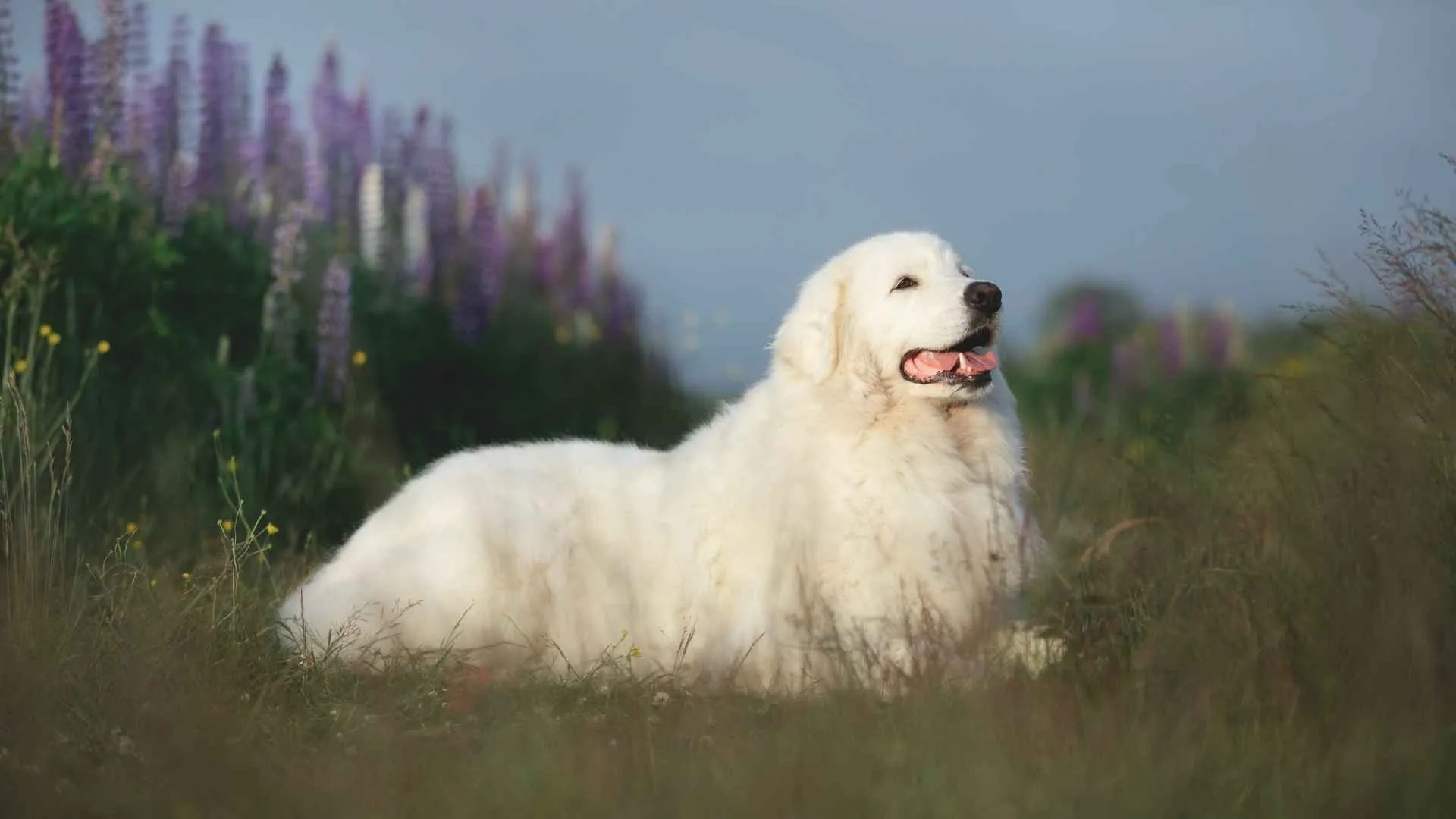
With over 2,000 years of guardian heritage behind it, the Maremma Sheepdog is the definition of a time-tested protector. Originally bred to defend flocks from wolves, bears, and even thieves, this Italian breed developed an instinctive sense of independence and vigilance that still defines it today. Its imposing frame, marked by a broad head and high-set ears, gives the Maremma a calm but noble appearance, perfect for a dog always on watch.
Unlike more social breeds, the Maremma prefers to observe rather than interact, especially with strangers. Its naturally aloof nature doesn’t indicate coldness but rather a serious, duty-first mindset. These dogs are fiercely devoted to their people and will quietly patrol their space with silent purpose, barking only when they sense a true threat.
Maremmas do best with experienced owners who understand their unique combination of autonomy and protectiveness. While they are intelligent and trainable, a bored Maremma becomes restless and unruly, making consistent mental stimulation essential.
Physical activity is also a key part of this breed’s routine. Enjoying long walks, often one to two hours a day, the Maremma thrives when given room to roam and a job to do. Their history as working dogs is not just in their blood; it’s in their behavior.
Interestingly, the Maremma Sheepdog is a blend of two regional types, the Maremmano and the Abruzzese, merged in the 1950s to preserve the breed’s purpose and legacy. This unification ensured the survival of a dog known as much for its endurance as for its steadfast independence.
As watchdogs, they’re quiet but assertive, sometimes physically protective. And while they may not be overly affectionate with strangers or other dogs, their loyalty to family is unwavering.
3. Central Asian Shepherd Dog
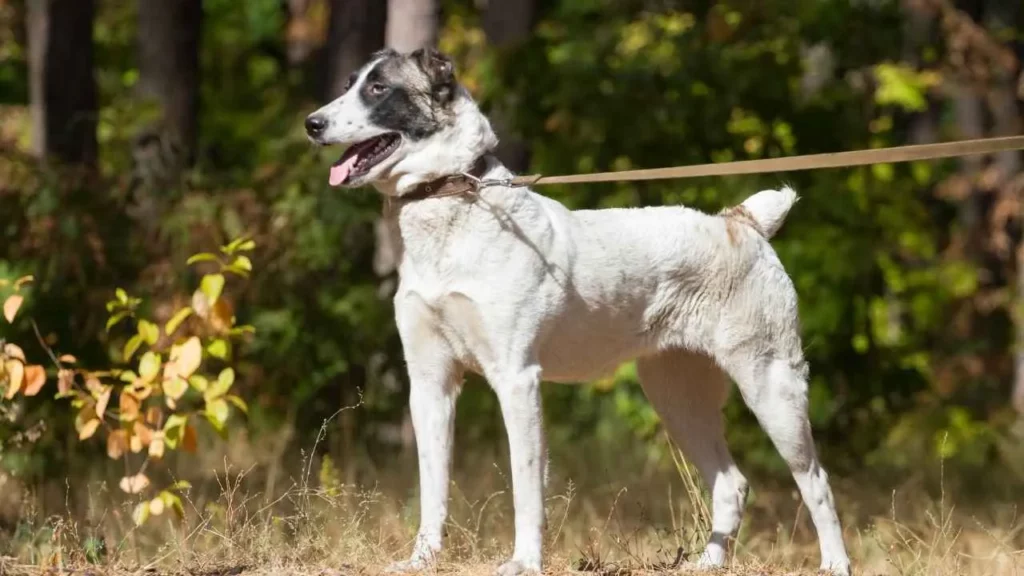
Rooted in centuries of guarding tradition, the Central Asian Shepherd Dog embodies independence and courage. This breed is known for being loyal, loving, and fearless, as per PetMD, a combination that makes it an ideal protector across rugged terrains. These dogs are not only self-reliant but also deeply devoted to their families, forming strong, affectionate bonds with those they trust.
From an early age, socialization plays a critical role in shaping their temperament. Because of their naturally reserved demeanor around strangers, it’s essential to expose puppies to diverse people, animals, and environments during their first 16 weeks. Early exposure lays the foundation for lifelong confidence and composure.
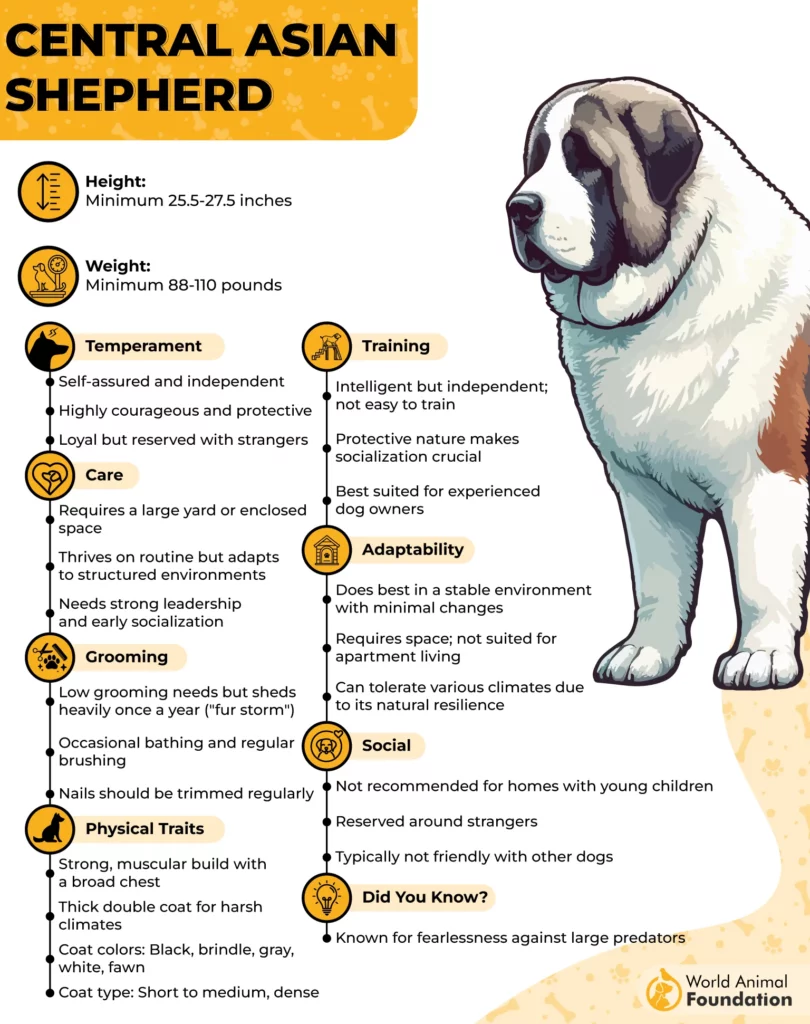
A unique trait of this breed is its adaptable energy level. While not hyperactive, Central Asian Shepherds benefit from regular walks or backyard play to stay balanced. Leashed strolls and room to roam can satisfy their moderate exercise needs.
Mentally, they crave stimulation. Puzzle toys or interactive tasks can keep their minds engaged, especially when indoors. These tools mimic the challenges they once faced as working guardians, giving them a purposeful outlet.
Their independence doesn’t mean detachment. These dogs enjoy being near their humans without demanding constant attention. That balance of autonomy and companionship makes them particularly intriguing for experienced dog owners.

Training these excellent guard dogs calls for patience and a positive approach. Reward-based techniques, preferably guided by a trainer familiar with working breeds, ensure that their intelligence and instinct are channeled constructively. Their steady nature and protective instincts shine brightest when shaped by early guidance and trust.
4. Catahoula Leopard Dog
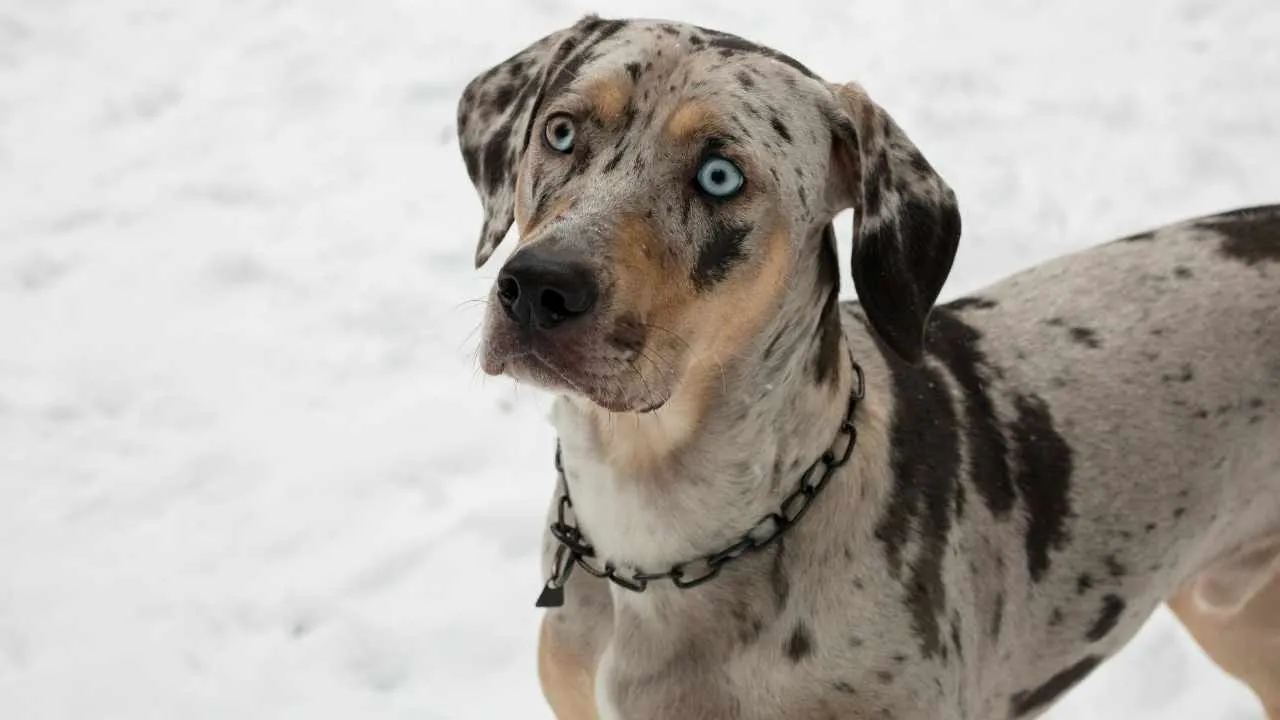
With its origins rooted deep in Louisiana’s wilderness, the Catahoula Leopard Dog is a striking and independent breed known for both its brains and boldness. This breed possesses an intense, serious, and focused temperament that matches its working heritage. Bred to herd wild hogs and guard property, the Catahoula’s excellent guarding instincts and alert nature make it a vigilant and dependable companion.
Their intelligence makes training relatively straightforward, but don’t expect blind obedience. The Catahoula thrives under firm yet fair leadership. Consistency and clear expectations are essential to gain their respect, especially when navigating their naturally headstrong personality.
Catahoulas are especially motivated by praise and human connection. They respond well to positive reinforcement, and when properly engaged, their eagerness to please can shine through. This makes them responsive watchdogs, always ready to vocalize when something seems off.
Their coat is a standout feature. As the National Association of Louisiana Catahoulas, Inc. points out, the “Leopard” name refers to their multicolored, spotted coat, which may feature a blend of up to five different colors, including black, buff, blue, and red.
Beyond their distinctive appearance, these dogs bring robust physicality to the table. Males and females alike typically stand 22–24 inches tall and weigh between 50–95 pounds, making them sturdy, agile partners in work and play.
Beneath that rugged exterior lies a driven and loyal nature. While they may demand an experienced hand, the Catahoulas’ loyalty and drive make them unforgettable companions in the right home.
5. Tibetan Mastiff
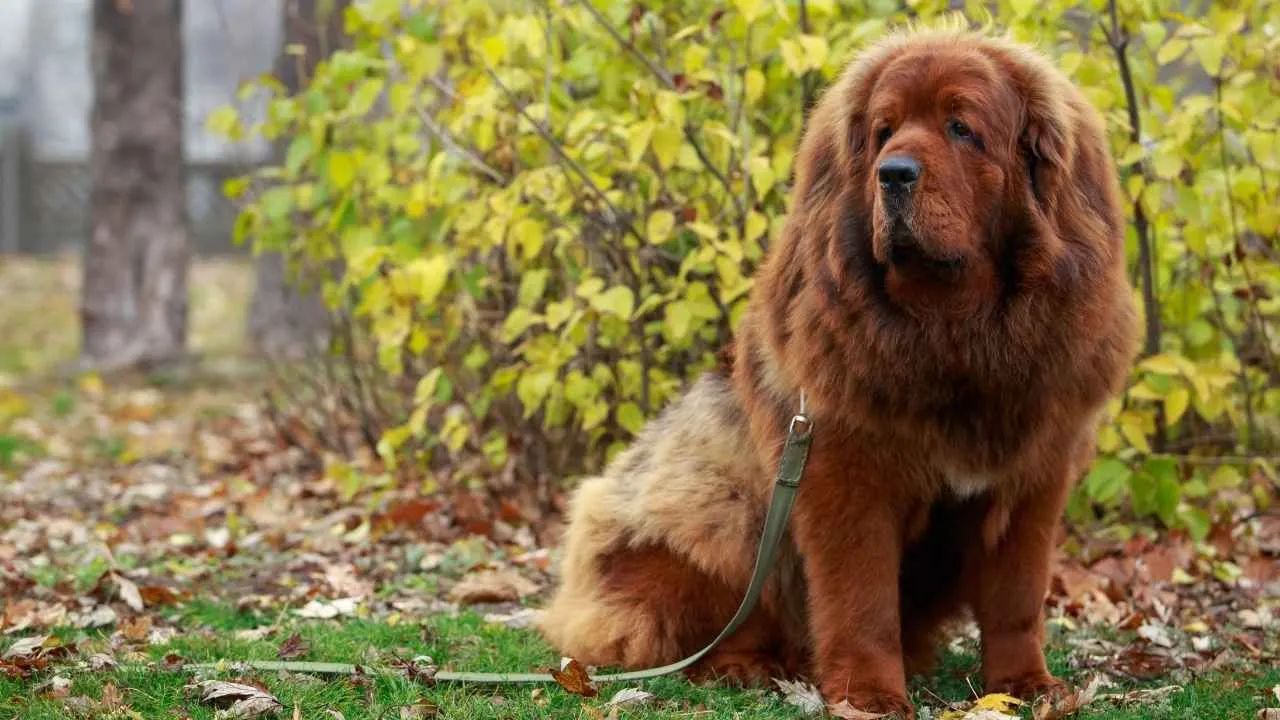
Bred to guard livestock and homes in the harsh Himalayan terrain, the Tibetan Mastiff is a breed defined by independence, strength, and regal presence. WebMD reports that this large and agile dog is not easily compared to more submissive breeds, thanks to its sharp intelligence and powerful self-reliance. Early and consistent training is crucial, not because they lack brains, but because they demand a trainer who earns their respect.
Tibetan Mastiffs are famously loyal, forming strong bonds with their families while remaining calm and composed at home. Yet their territorial nature means they’re naturally protective of their space and may show dominance around unfamiliar dogs. Over time, however, they can learn to coexist peacefully with canine companions.
Their nutritional needs are surprisingly modest. Adult Tibetan Mastiffs often eat far less than their size suggests, and may even skip meals altogether, especially during seasonal shifts or when females are in heat. Monitoring their intake and consulting a vet ensures they remain healthy without overfeeding.
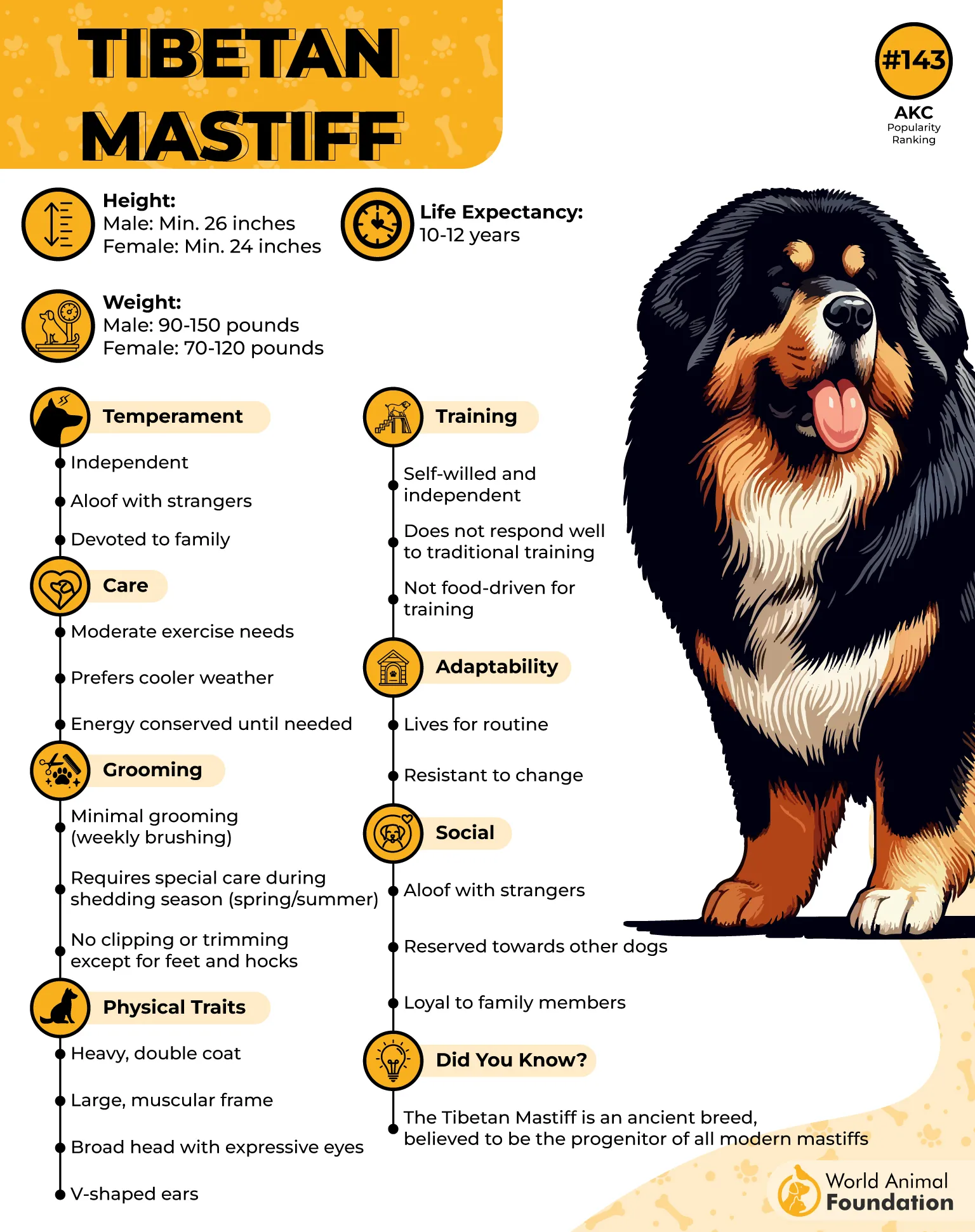
These dogs mature slowly, with males typically reaching full maturity at 4–5 years. This delayed development contributes to their long-lasting puppy-like curiosity, even in a 100-pound frame. Their thick mane and lion-like coat make them both majestic and well-equipped for rugged climates.
The breed’s unique history includes accompanying traders and shepherds, offering protection from predators like wolves and snow leopards. Though it’s now difficult to find purebred Tibetan Mastiffs in their homeland, their ancestral spirit lives on in every wary glance and dignified stance.
Because they were shaped by solitude and purpose, Tibetan Mastiffs thrive with families who understand their need for space, consistency, and meaningful roles within the household.
6. Great Pyrenees
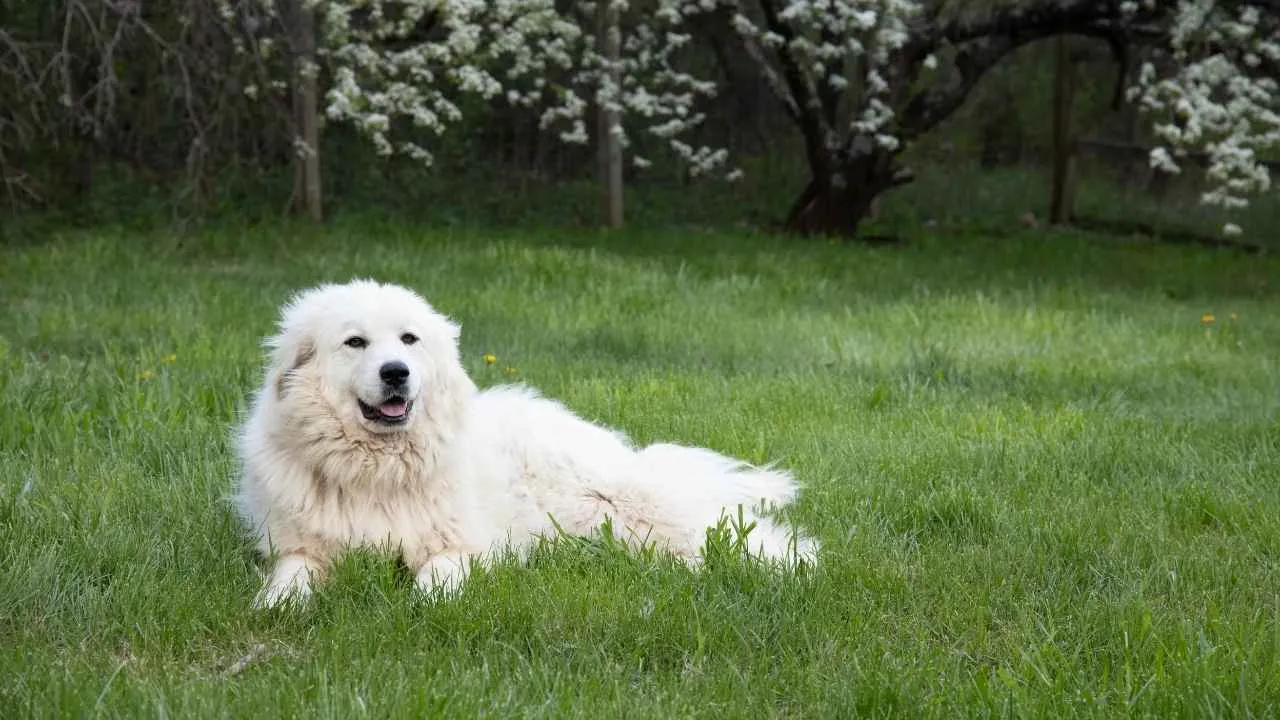
Bred to protect livestock across remote mountain ranges, the Great Pyrenees carries the calm confidence of a true sentinel. Hills Pet notes that they are muscular and double-coated dogs.
They were shaped by centuries of guarding flocks alone in the Pyrenees Mountains, an origin that explains their quiet strength and independent nature. Despite their stoic working roots, these gentle giants are known for their affectionate bonds with families and their patience with children.
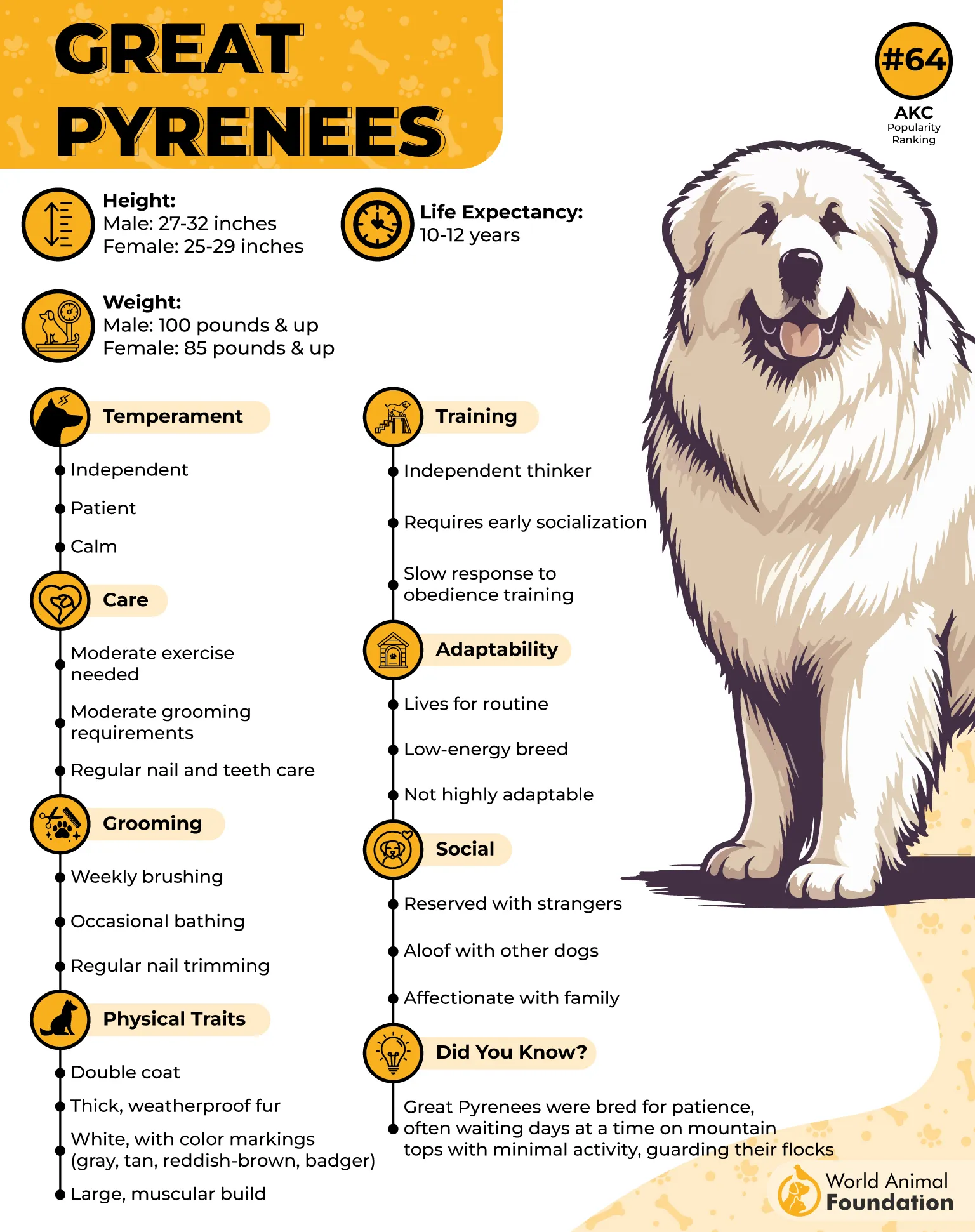
Their loyalty is matched by their need for purpose. A Great Pyrenees thrives when given structure or mentally stimulating tasks, like puzzle toys or a routine role in daily life. That same independence, however, can challenge training, requiring patience and consistency. The breed’s deep instinct to bark makes early socialization essential to keep protectiveness in check.
While calm indoors, these dogs appreciate outdoor time and a predictable routine. Their majestic white coat is surprisingly low maintenance, requiring regular brushing and only occasional grooming, even during heavy shedding seasons.
Historical records reflect their longstanding nobility. This breed was recognized as the Royal Dog of France in 1675 by Louis XIV. These dogs also pulled carts and delivered milk in Belgium, proving their versatility beyond the pasture.
Fossils dating back to the Bronze Age reveal just how enduring this breed has been. Even today, the Great Pyrenees continues to serve as a capable livestock guardian and a dignified, devoted family protector.
7. Kangal
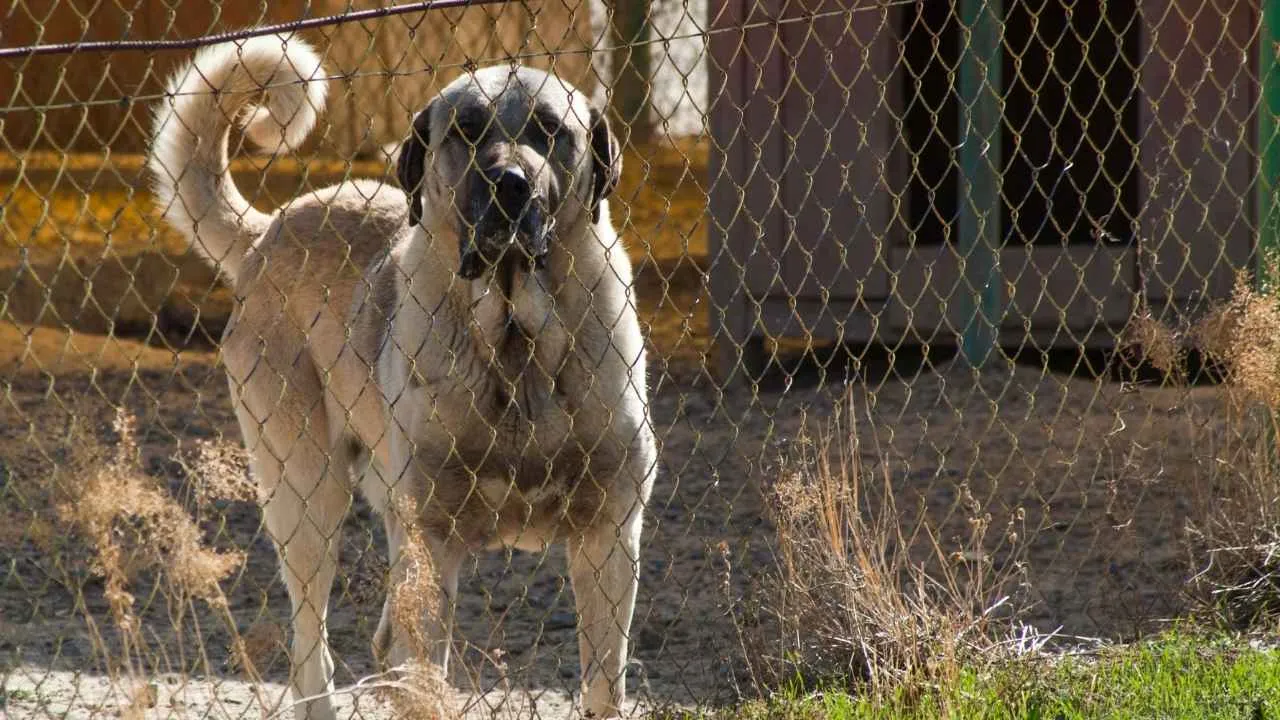
Steeped in heritage and bred for protection, the Kangal is a formidable yet composed guardian. Kangals have helped reduce livestock losses to cheetahs in Namibia by 80%, showcasing their unwavering instinct to protect. This Turkish breed may no longer patrol against wolves, but its sharp territorial drive and calm vigilance remain intact.
Despite their gentle disposition with family, Kangals are naturally aloof with strangers. Their size and power demand an experienced owner who can provide consistent socialization from a young age, particularly around people, livestock, and other animals. Training must be firm yet positive, relying on trust rather than force, as coercion can backfire with this independent-minded dog.
Kangals don’t thrive on obedience drills but respond well to purposeful activity. Mental engagement through problem-solving tasks and puzzle games helps balance their need for autonomy. While not overly vocal, they alert with intention and may be wary of unfamiliar visitors.
Exercise is non-negotiable. These athletic giants can hit speeds over 30 mph and need two hours of movement daily, mixing steady walks with space to roam. Grooming every other day helps manage their dense coat, and a clean, calm environment supports their balanced temperament.
The Kangal’s success lies in the owner’s ability to lead with patience, respect, and a deep understanding of this ancient working breed’s instincts.
Conclusion
From the unwavering loyalty of the Akita to the fearless protection of the Kangal, independent guard dog breeds offer more than just muscle; they bring wisdom, instinct, and centuries of purpose-bred confidence. These dogs aren’t your average lap companions; they’re intelligent, discerning partners that thrive with structure, training, and respect. Whether it’s the intelligence of the Tibetan Mastiff, the calm nature of the Great Pyrenees, or the affection of the Maremma Sheepdog, each breed showcases unique traits that blend solitude with service.
While some, like the Central Asian Shepherd or Catahoula Leopard Dog, remain deeply rooted in traditional working roles, others, such as the Black Russian Terrier or Dogo Argentino, demonstrate unmatched adaptability across environments. Breeds like the Estrela Mountain Dog and German Shepherd, though not featured above, also exemplify this ideal mix of self-reliance and protective instinct. And let’s not forget that even the most independent dogs can be surprisingly affectionate, often revealing their fun-loving side once trust is earned.
Choosing one of these strong-willed protectors means embracing a lifestyle of mutual respect, commitment, and purpose. In return, you gain a watchful, devoted companion ready to stand guard and share your world on their own confident terms.


